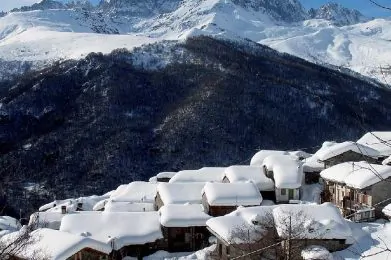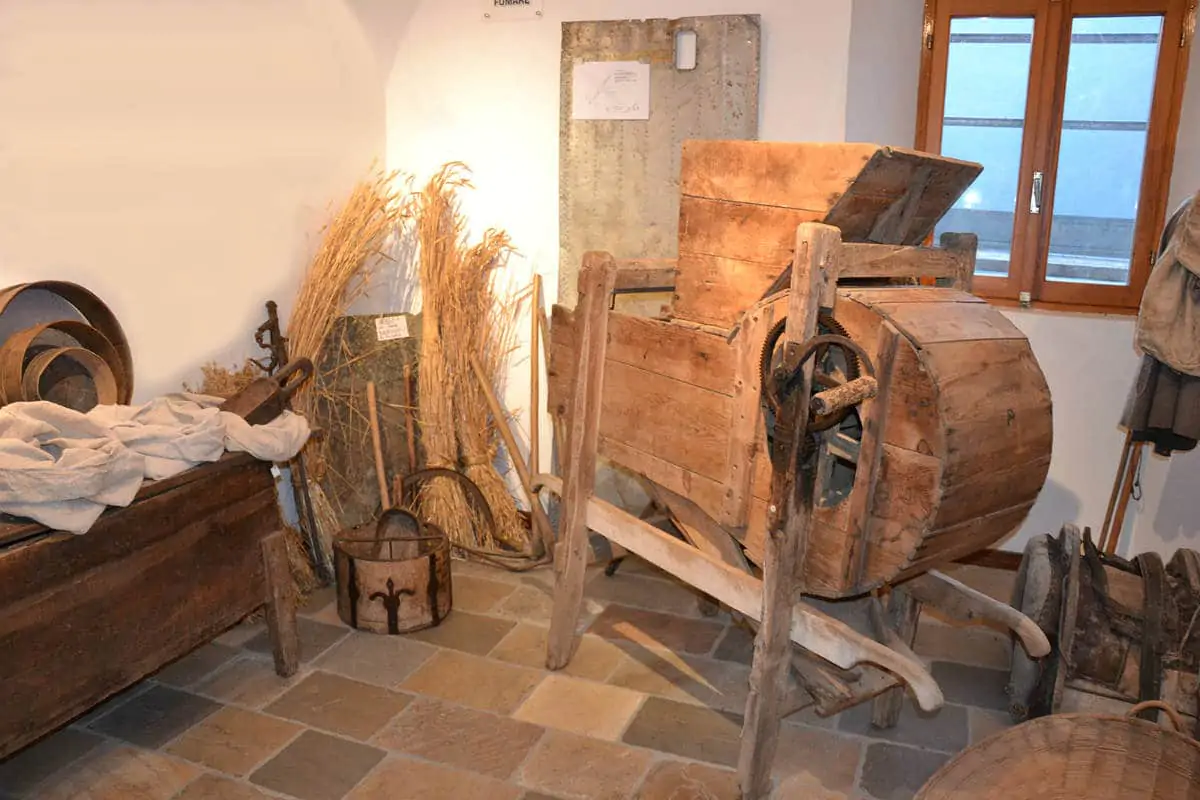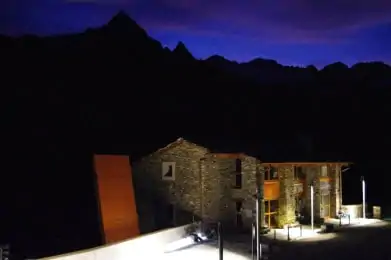The Civic Ethnographic Museum dedicated to the High Po Valley of Ostana has been set up in 1996. It was born with the intention not only to the memory of a past time, since, even more, to make to know and to appreciate the variety and complexity of the world which represented this plot of land Occitan. The museum halls are decorated with reconstructions of various environments; the visitor can also count on explanatory cards, documents and photographs to fully dive into the reality of a time.
In the first room, learned the main historical events of the country and observed the map of 1900 with the toponyms premises in Occitan, the visitor enters the laboratory of a mënuzie (carpenter) and knows its various tools of work: Lou toùërn, lou bonc, lou rabot, plane, the ënvëstiòou, lou diaou, lou davi, lou varlét, lou Martel, stems, the frëndo; objects not reproduced but original, many of which belonged to a carpenter of San Bernardo, Borgata Ostana, in the first half of the twentieth century.
In the second room you can visit the ëstabi (stable) and the vòouto (wine cellar). In the stable, the local where took place the life in winter, are lou liëch and parondo in rye straw, in the shelter of the humidity, the ëstuo in stone, lou driçòou to store all dishes, boncho dë palho, lou couròou for the first steps of the kids, Cuno for newborns, the rouét for spin wool. And yet, the crëppio and receptacles for cattle as the tub for watering and the buckets for milking, and hung to jouquìe de jaline, sounalhe and canàoule (collars of wood). In the cellar are found the tools typical of the processing of milk: the siroùiro, baçin, and gavie, oulo, buriëro, palëtte, cavanho i.e. the wicker basket in which it was stored butter wrapped in the leaves of piàie (sycamore maple) and in mantil, brought to sell at the market, Friday, from women who fell walk to Paesana.
In the third room, dedicated to the clothing of Ostana in use until the years ’50 1900 are exposed, in addition to a wedding dress of the years ’40, lou chamizot (sort of an under-garment-vest in Wool “home”, knitted), tricò, croupat, ‘schaouçe, pounche and pelerine, maioun and sharpe…, shirts and sheets in télo, the textile fiber hemp grown on the site until the years of the II World War I, combed ” by brustiàire and “worked” by tisòou of the country. A sewing machine dating back to the end of the 1800s and the “divided” religious dë Coumpanìo les Filhe dë Marìo complete the preparation.
In the fourth room one enters the world of cultivations in use at Ostana, with the tools used in these jobs (hoes having various shapes, panniers, Trident, basto), seeds of buckwheat inside the umino, the cylindrical container that is used as a measure of capacity for grains, and the vëntouar of early twentieth century built by a craftsman from then, at San Bernardo. In addition to the buckwheat, land of Ostana also produced rye, potatoes and barley. In a corner of the same room which is in reality the room that once housed the pupils of Ostana, one can observe a glimpse of school life of the early years of the last century: an original bench, the chair, a geographical map of 1920, scoreboards, notebooks, books and a folder of wood, all dating back to those years. A small space is also dedicated to chavatìn with nails, uppers, forms for shoes and clogs. In a cabinet to showcase restored, the “precious” of the rich collection of the museum: jewelry, watches, lumi d’epoca, copies of ancient parchments and a copy of the Statutes of Ostana dating back to 1425.
The museum hosts periodically photographic exhibitions with the purpose to offer at a glance on Ostana in various aspects that distinguish, as the environment, the territory, cultivated fields.
info@reneis.org



